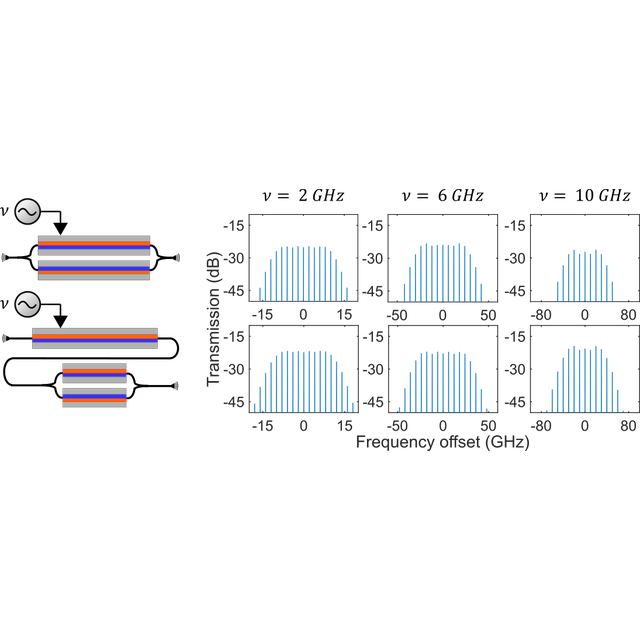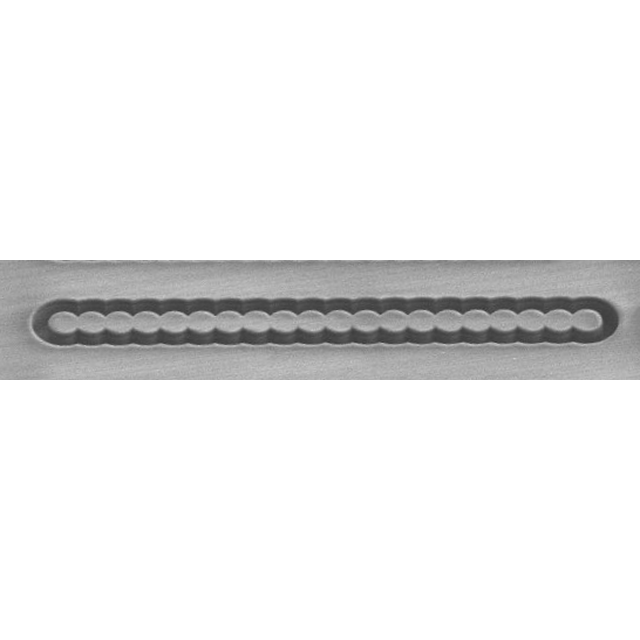References
Optical frequency combs are an essential tool in many fields. To generate them, it is possible to exploit silicon photonics phase and amplitude modulators. In this work we numerically investigate the performance of such devices for the generation of flat frequency combs, in terms of flatness and tunability.
Optical frequency combs consist in a set of mutually coherent, regularly spaced laser lines. They benefit to a wide range of applications, from spectroscopy and telecommunications to the calibration of astronomical spectrometers, as well as LIDAR or neuromorphic techniques. In order to generate such a spectrum, with a shape similar to that of a comb, the method is to make a pattern appear on light repeatedly over time. There are several techniques to achieve this, including pulsed lasers, non-linear optical effects in micro-resonators, and electro-optical modulation. While the first two techniques can generate combs with numerous lines, the parameters of these combs (the spacing between the lines, the envelope of the comb, etc.) are relatively fixed. However, for many applications, it is preferred to have tunable combs with a flat envelope. Electro-optical modulation bypasses this stiffness and offers a great flexibility for generation. There are many electro-optical modulator technologies. The Silicon photonics platform is one of the most interesting for the integration of optical circuits that can be produced in large quantities and at low cost.
In this work, we evaluate the performance of silicon modulators for frequency comb generation, in terms of flatness and tunability, through a simulation. The numerical model of the elementary phase modulators is based on real measurements and allows to predict the behaviour of two more complex structures aiming at flat combs. Both architectures (a phase modulator followed by an intensity modulator, as well as a dual-drive Mach-Zehnder modulator) are based on a time-to-frequency conversion principle. Using an optimization algorithm for the voltages and optical phase shifts in each architecture, we estimate that they both allow for the generation of a comb containing 9 lines with a flatness of less than 2 dB, and whose spacing can be tuned from 0.1 to 7 GHz. The average ratio of line power to incident laser power is evaluated to range from -30 to -20 dB. The line-spacing tunability is limited by the modulators speed. By segmenting them into several elements in one of the structures, the speed of each element can be increased, and we find that with 5 elements, a spacing of up to 39 GHz should be achieved between each of the 9 lines, while maintaining the comb flatness.
References
Silicon photonics phase and intensity modulators for flat frequency comb generation
Lucas Deniel1,* Erwan Weckenmann2, Diego Pérez Galacho1,4 Christian Lafforgue1, Stéphane Monfray3, Carlos Alonso-Ramos,1 Laurent Bramerie2, Frédéric Boeuf3, Laurent Vivien,1 et Delphine Marris-Morini1
1Univ. Paris-Saclay, CNRS, Centre for Nanosciences and Nanotechnologies, 91120 Palaiseau, France
2Univ. Rennes, CNRS, FOTON-UMR 6082, F-22305 Lannion, France
3ST Microelectronics, 850 rue Jean Monnet, 38920 Crolles, France
4Current address: ITEAM Research Institute, Universitat Politècnica de València, Spain
Photonics Research Vol. 9, issue 10, pp. 2068-2076 (2021)
https://doi.org/10.1364/PRJ.431282
contact : Lucas Deniel
Figure : Two silicon modulators architectures for flat frequency comb generation are numerically modeled (left). Simulated combs are reported with different line spacings (2, 6 and 10 GHz) for both structures, showing similar performances (right).









